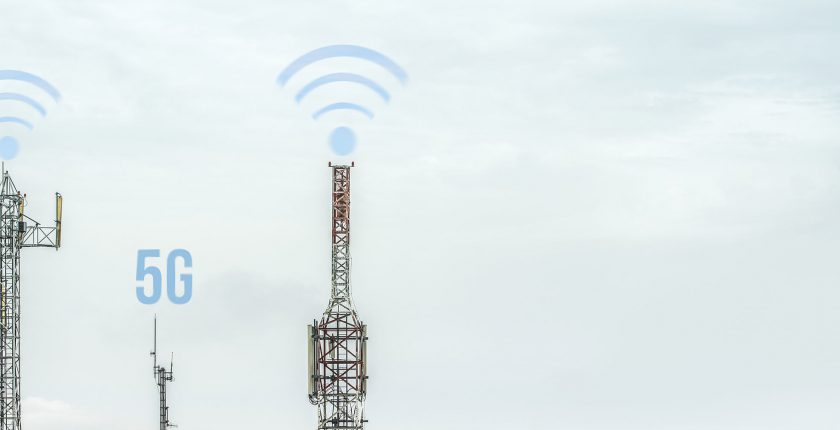Blog
5G Training and Support Initiatives
- January 28, 2020
- Posted by: Fred Arnold
- Category: Telecommunications Wireless

by Cesar Ruiz, CEO of Learning Alliance
5G training is a constant discussion at Learning Alliance and its impact on businesses. I am interested in its fast evolution. Taking a look into 3GPP’s new Rel-16 has me excited for its impact on data communication standards, and ultimately, that leads me to our overall focus of this short read. As an educational institution, how do we get ready for 5G training when evolution happens fast? But first, we start at the beginning of telecommunications.
Back in the early 1912’s, capacity for telegraphic equipment only saw a maximum of 100 bits per second spread across a potential of 11 cells on the entire planet. Congestion was staggering, so new ideas needed to be produced.
Frequency sharing was conceptualized in the 1900’s by Guglielmo Marconi. Since then, our battle for more capacity began. Over time, we saw staggering cell site growth. Capacity grew, but spectral efficiency and spectrum usage were left relatively unchanged. As new standards evolved, we saw a switch in mindset. Yes, we will be adding more cell sites – albeit smaller ones like Femto/Pico Cells – but 5G NR will look at all parts of the puzzle to bridge the gap in communication efficiency.
3GPP looks to accomplish spectral efficiency and usage through multiple initiatives like Enhanced Mobile Broadband (eMBB), Massive Machine Type Communications (mMTC) and Ultra Reliable/Low Latency of mission critical communications (MCC UR/LL).
Release 15 of 3GPP defined some standards for the above elements. For something to be considered 5G, these 3 elements need to be met:
- >10 Gb/s peak data rates for the enhanced mobile broadband (eMBB)
- >1 M/km2 connections for massive machine-type communications (MMTC)
- <1 ms latency for ultra-reliable low-latency communications (URLLC).
Release 15 also delegated specifications on how to tie existing infrastructure into 5G territory through a step by step process. This means systems will evolve for technicians in the field at a fast rate. One month a technician may be focusing on older cell sites that need to be upgraded to support 5G standards then the next they are installing new 5G supported hardware on utility poles and roof tops.
I mention these tidbits to capture the quick evolution we face. 5G aims to evolve our network at a higher rate than all of 1900-2010. As we can see, the difficulty becomes what do the techs need to be trained in, and how will that be standardized into our educational methodology?
The truth of the matter is that connecting an antenna is connecting an antenna. Weatherproofing is weatherproofing. But the key here is exposure to the different systems, structures and technology a new technician needs to understand. As educational entities, how do we gain access to that tech to deliver hands on learning to students? You can shorten time to productivity simply by exposure.
Release 16 for 3GPP is slated to come out in June 2020, in full. It is a massive release that aims to cultivate the true “launch” of 5G. June 2020 is not that far away. We are close to the standards for commercial use, but a lack in workforce may impede a full scale role out.
Revisiting the topic above about exposure for green hand technicians – blended training models within this demographic work best. We have found that a 60% hands on, 20% lecture and 20% e-learning approach bridges the gap entirely from a green hand to a Tower Technician 1 within a spam of 11 to 15 days – an expedited 130 hour Tower 1 program.
If 5G pushes evolution quickly, we as educational entities must adapt quickly as well. Partnerships are important aspects to this adaptation. As new technologies role out, we can incorporate those technologies into hands on application. These students are not your current workforce, they do not need to be taken out of the field for re-training.
It saves a company immense amounts of money as they grow their workforce by obtaining 5G skilled technicians who can climb, install a small cell, weather proof an antenna at 400 ft. and understand the ins and outs of new vs. old technology.
We currently announced our ATP partnership with WIA as a collaboration on bridging this divide. Their work on the Telecommunications Education Center provides great 5G e-learning components for students and businesses.
With two components (lecture and e-learning) of our three tiered approach in place, our next evolution is to incorporate hands on. It comes down to the standards, the equipment and getting it in front of our students. Hybrid training centers that deliver cross trained Tower Technicians will be best suited to meet 5G training demand for the future.
